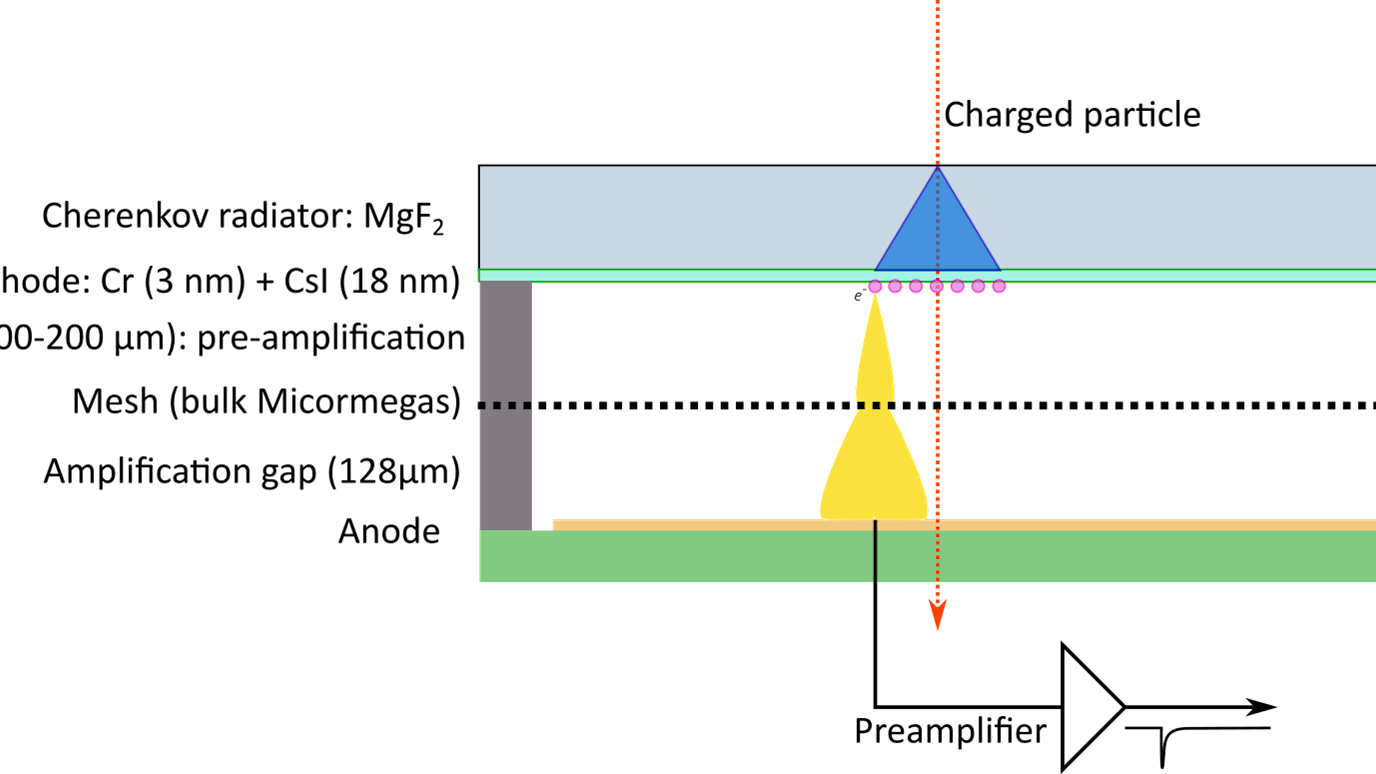Dr Antonija Utrobicic (CERN GDD Laboratory)
Recent developments in the accelerator facilities focused on the increased luminosity are setting more demanding requirements for particle detectors in terms of radiation hardness, high rate capability, large detector area, and time and position resolution.
MicroPattern Gaseous detectors (MPGDs) are proven to be radiation hard and a high rate capable technology with excellent spatial and temporal resolution. Ones of the best-known detectors, such as Gas Electron Multipliers and Micromegas (MM), have been widely used in various physics experiments, mainly for particle trajectory reconstruction.
The PICOSEC Micromegas collaboration was formed to evaluate the usage of Micormegas in precision timing applications. Precision timing detectors are used in time-of-flight detectors (ToF) to enhance particle identification in High energy physics experiments.
PICOSEC Micromegas detector consists of a Cherenkov radiator coupled to a semitransparent CsI photocathode and a two-stage MM amplifying structure. A single-channel detector prototype as proof of concept has yield a time resolution below 25 ps for 150 GeV muons. Since ToF detectors often require covering a large area the advancements in the PICOSEC detector are ongoing in the direction of scaling up the area and number of channels. This seminar will cover the operating principle of the PICOSEC MM detector and observations from the first single-channel and multi-channel prototypes. Special attention will be paid to the challenges in the design of a new 100 channel detector with an active area of 10 cm x 10 cm.

PICOSEC concept




















